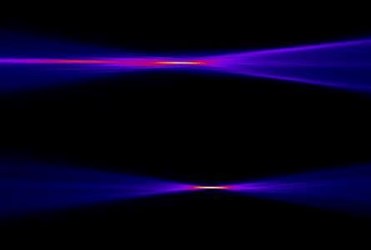Corrective Quartz Lens Achieves Unparalleled X-Ray Laser Focus
By Jof Enriquez,
Follow me on Twitter @jofenriq

Scientists report that custom-manufactured corrective quartz glasses fitted to a standard lens can focus X-ray beams to an unparalleled concentration, approaching the theoretical limit.
Focusing X-ray lasers at the nanoscale makes possible a wide range of applications, such as studying biological particles, chiral molecules, and the structure and dynamics of matter from atomic distances. Current materials and fabrication technology, however, limit the area that an X-ray beam can focus on.
Beryllium compound refractive lenses (Be CRLs), the current standard for X-ray lenses, are produced with residual aberrations and are usually slightly too strongly curved near the center, resulting in more light scattered over an area wider than ideal for nanoscale measurements.
"If you want to heat up small samples using the X-ray laser, you want the radiation to be focused on an area as small as possible,” explains Andreas Schropp of Deutsches Elektronen-Synchrotron (DESY) (English: German Electron Synchrotron) in a press release. “The same is true in certain imaging techniques, where you want to obtain an image of tiny samples with as much details as possible.”
To achieve a more optimal focus despite the aberrations in the beryllium compound refractive lenses, Schropp and his international colleagues manufactured a corrective lens made of quartz glass, placed this behind a stack of 20 beryllium lenses, and tested it using the Linac Coherent Light Source (LCLS) X-ray laser at SLAC National Accelerator Laboratory in Menlo Park, California.
In results investigated at the LCLS, and verified in synchrotron radiation sources PETRA III (DESY, Hamburg, Germany) and Diamond Light Source (DLS, United Kingdom), showed that the X-ray focus improved significantly.
“Without the corrective glasses, our lens focused about 75 per cent of the X-ray light onto an area with a diameter of about 1600 nanometres. That is about ten times as large as theoretically achievable,” says principal author Frank Seiboth from the Technical University of Dresden, who now works at DESY. “When the glasses were used, 75 per cent of the X-rays could be focused into an area of about 250 nanometres in diameter, bringing it close to the theoretical optimum.”
This technique of fabricating corrective lenses can enable next-generation X-ray lasers and synchrotron light sources to perform new experiments, according to the researchers.
"Examples include the non-linear scattering of particles of light by particles of matter, or creating particles of matter from the interaction of two particles of light. For these methods, the X-rays need to be concentrated in a tiny space which means efficient focusing is essential,” says lead scientist Schroer, who also is a professor of physics at the University of Hamburg.
The research study was supported by the Technical University of Dresden, the Universities of Jena and Hamburg, KTH Royal Institute of Technology in Stockholm, DLS, SLAC National Accelerator Laboratory, and DESY, and is discussed in detail in Nature Communications.
